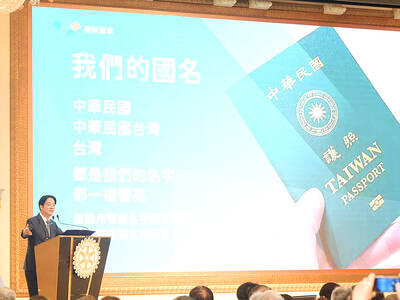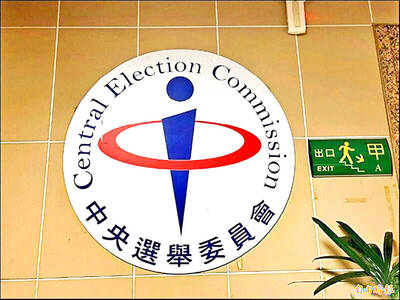Moving swiftly, US product safety authorities say they are launching an investigation into the presence of the toxic metal cadmium in children’s jewelry imported from China after disclosure of lab tests showing that some pieces consisted primarily of the dangerous substance.
The promise to “take action as quickly as possible to protect the safety of children” followed by hours the release on Sunday of an Associated Press (AP) investigative report that documented how some Chinese manufacturers have been substituting cadmium for lead in cheap charm bracelets and pendants being sold in the US.
Meantime, the head of the US Consumer Product Safety Commission (CPSC), the agency that regulates children’s jewelry and toys, was set to deliver a speech today in Hong Kong to Asian manufacturers emphasizing that US regulators are still scrutinizing jewelry contents now that they’ve barred the use of lead.
The most contaminated piece analyzed in lab testing performed for the AP contained a startling 91 percent cadmium by weight. The cadmium content of other contaminated trinkets, all purchased at national and regional chains or franchises, tested at 89 percent, 86 percent and 84 percent by weight.
The testing also showed that some items easily shed the heavy metal, raising additional concerns about the levels of exposure to children.
CPSC spokesman Scott Wolfson said the agency would study the test results, attempt to buy the contaminated products and “take appropriate action.”
The jewelry testing was conducted by chemistry professor Jeff Weidenhamer of Ashland University in Ohio, who over the past few years has provided the CPSC with results showing high lead content in products that were later recalled.
Cadmium is a known carcinogen. Like lead, it can hinder brain development in the very young, recent research has shown.
Children don’t have to swallow an item to be exposed — they can get persistent, low-level doses by regularly sucking or biting jewelry with a high cadmium content.
To gauge cadmium’s prevalence in children’s jewelry, the AP organized lab testing of 103 items bought in New York, Ohio, Texas and California. All but one were bought in November or last month.
The results: 12 percent of the pieces of jewelry contained at least 10 percent cadmium.
Some of the most troubling test results were for bracelet charms sold at Walmart, at the jewelry chain Claire’s and at a dollar store. High amounts of cadmium were also detected in The Princess and The Frog movie-themed pendants.
“There’s nothing positive that you can say about this metal. It’s a poison,” said Bruce Fowler, a cadmium specialist and toxicologist with the US Centers for Disease Control and Prevention.
On the CDC’s priority list of 275 most hazardous substances in the environment, cadmium ranks No. 7.
Jewelry industry veterans in China say cadmium has been used in domestic products there for years. Zinc, the metal most cited as a replacement for lead in imported jewelry being sold in the US, is a much safer and nontoxic alternative. But the jewelry tests conducted for AP, along with test findings showing a growing presence of cadmium in other children’s products, demonstrate that the safety threat from cadmium is being exported.
If the products were painted toys, they would face a recall in the US. If they were industrial garbage, they could qualify as hazardous waste. But since there are no cadmium restrictions on jewelry, such items are sold legally.
There is no definitive explanation for why children’s jewelry manufacturers, virtually all from China in the items tested, are turning to cadmium. But a reasonable double whammy looms: With lead heavily regulated under the Consumer Product Safety Improvement Act of 2008, factories scrambled for substitutes, just as cadmium prices plummeted.
Xu Hongli, a cadmium specialist with the Beijing office of Asian Metal, a market research and consultancy firm, said test results showing high cadmium levels in some Chinese-made metal jewelry did not surprise her.
Using cadmium alloys has been “a relatively common practice” among manufacturers in Yiwu, Qingdao and Sichuan Province, Xu said.
“Some of their products contain 90 percent cadmium or higher,” she said. “Usually, though, they are more careful with export products.”

LONG FLIGHT: The jets would be flown by US pilots, with Taiwanese copilots in the two-seat F-16D variant to help familiarize them with the aircraft, the source said The US is expected to fly 10 Lockheed Martin F-16C/D Block 70/72 jets to Taiwan over the coming months to fulfill a long-awaited order of 66 aircraft, a defense official said yesterday. Word that the first batch of the jets would be delivered soon was welcome news to Taiwan, which has become concerned about delays in the delivery of US arms amid rising military tensions with China. Speaking on condition of anonymity, the official said the initial tranche of the nation’s F-16s are rolling off assembly lines in the US and would be flown under their own power to Taiwan by way

‘OF COURSE A COUNTRY’: The president outlined that Taiwan has all the necessary features of a nation, including citizens, land, government and sovereignty President William Lai (賴清德) discussed the meaning of “nation” during a speech in New Taipei City last night, emphasizing that Taiwan is a country as he condemned China’s misinterpretation of UN Resolution 2758. The speech was the first in a series of 10 that Lai is scheduled to give across Taiwan. It is the responsibility of Taiwanese citizens to stand united to defend their national sovereignty, democracy, liberty, way of life and the future of the next generation, Lai said. This is the most important legacy the people of this era could pass on to future generations, he said. Lai went on to discuss

MISSION: The Indo-Pacific region is ‘the priority theater,’ where the task of deterrence extends across the entire region, including Taiwan, the US Pacific Fleet commander said The US Navy’s “mission of deterrence” in the Indo-Pacific theater applies to Taiwan, Pacific Fleet Commander Admiral Stephen Koehler told the South China Sea Conference on Tuesday. The conference, organized by the Center for Strategic and International Studies (CSIS), is an international platform for senior officials and experts from countries with security interests in the region. “The Pacific Fleet’s mission is to deter aggression across the Western Pacific, together with our allies and partners, and to prevail in combat if necessary, Koehler said in the event’s keynote speech. “That mission of deterrence applies regionwide — including the South China Sea and Taiwan,” he

UNPRECEDENTED: In addition to the approved recall motions, cases such as Ma Wen-chun’s in Nantou are still under review, while others lack enough signatures The Central Election Commission (CEC) announced yesterday that a recall vote would take place on July 26, after it approved the first batch of recall motions targeting 24 Chinese Nationalist Party (KMT) lawmakers and Hsinchu Mayor Ann Kao (高虹安). Taiwan is in the midst of an unprecedented wave of mass recall campaigns, following a civil society push that echoed a call made by Democratic Progressive Party (DPP) caucus whip Ker Chien-ming (柯建銘) in January to initiate signature drives aimed at unseating KMT legislators. Under the Civil Servants Election and Recall Act (公職人員選舉罷免法), Taiwanese can initiate a recall of district-elected lawmakers by collecting